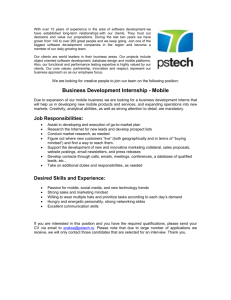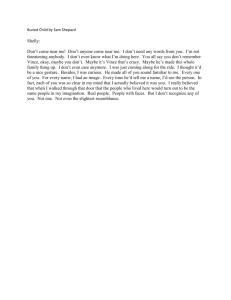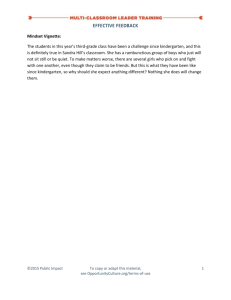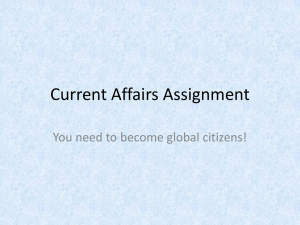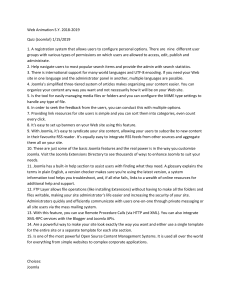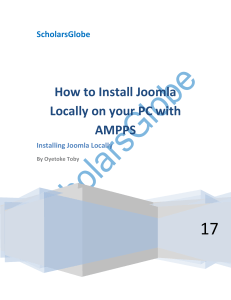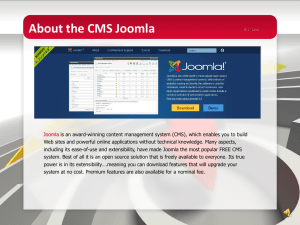session37-CSSE375-SWMaint30K - Rose
advertisement
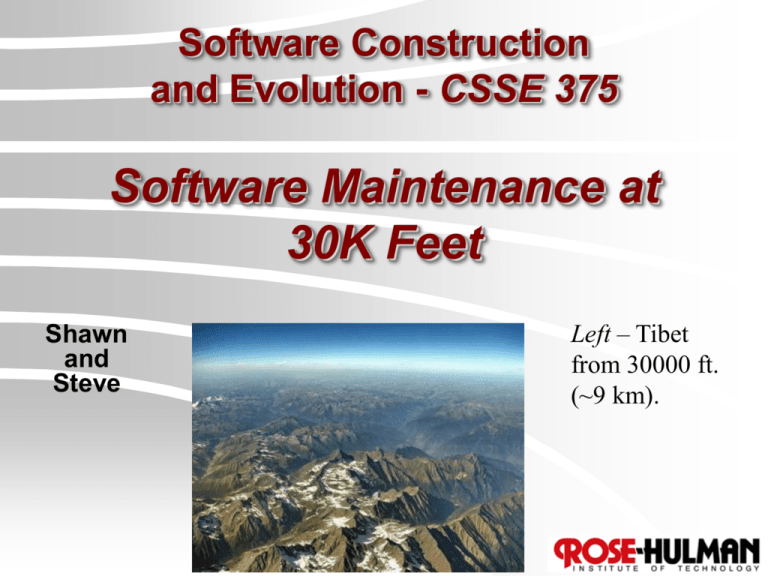
Software Construction and Evolution - CSSE 375 Software Maintenance at 30K Feet Shawn and Steve Left – Tibet from 30000 ft. (~9 km). Recall: Software Evolution 1. The Law of Continuing Change (1974) 2. The Law of Increasing Complexity (1974) 3. The Law of Self Regulation (1974) 4. The Law of Conservation of Organizational Stability (1980) 5. The Law of Conservation of Familiarity (1980) 6. The Law of Continuing Growth (1980) 7. The Law of Declining Quality (1996) 8. The Feedback System Law (1996) Source: Lehman, M., et al, “Metrics and Laws of Software Evolution—The Nineties View,” Proceedings of the 4th International Software Metrics Symposium (METRICS '97), IEEE, 1997, can be downloaded from: http://www.ece.utexas.edu/~perry/work/papers/feast1.pdf 2 Software Maintenance Concepts “So, you tried to do this yourself?” 3 Software Maintenance Mindset Calibration Industry Cost Mindset: Software Maintenance is a problem! Maintenance activities consume 50-80% of most software budgets ~20% of maintenance devoted to fixing errors (Corrective) Perfective, Adaptive & Preventative is the rest BETTER MINDSET: Software Maintenance Investments Sustain and Improve Software Assets Q10 4 Goals of Software Maintenance Preserve and enhance investments in software systems Proactive maintenance Reactive maintenance Improve software maintainability and ultimately extend software life e.g., Reengineering of maintenance critical software 5 Development versus Maintenance (1 of 2) Software Development (Initial) Often “from scratch” or “green field” Can choose process model Time to upgrade/update methods and tools Requirements and delivery driven Risk is often in requirements uncertainty Closer development project gets to delivery, the more it looks like maintenance… Q11 6 Development versus Maintenance (1 of 2) Software Maintenance Must work within constraints of “existing system” Changes smaller scale than original development Manage change with multiple releases rather than functional builds Large part of effort is in understanding the change in the context of existing system artifacts Requires an “augmentation” rather than construction mindset Q12 7 Software Maintenance versus Evolution Maintenance and Evolution both refer to making changes to an existing system Maintenance often refers to fixing bugs or porting a system to a new platform Evolution is implied when making enhancements to existing software where the specifications or technology changes Q13 8 Software Systems Evolve Software grows in size, complexity, and errors Increased size with adding new features Increased complexity with add-on changes Errors complicated by continuous changes, often incomplete! Now that’s an insidious bug... Q14 9 The “Hydra Effect” in Corrective Maintenance 10 Software Maintenance Challenge Seemingly minor changes often turn out to be more extensive than expected Consequences include: Incomplete changes (maybe discovered by user...) Poorly implemented changes (patches and spaghetti) Effort, resource, and estimate errors (due to low visibility) Difficulty augmenting software design Reduced maintainability and useful life of the software Q15 11 Proactive Versus Reactive Maintenace Cost Reactive Maintenance Proactive Maintenance Time 12 Exercise: Development and Maintenance Is the difference really “green field?” These days, few project are “from scratch” Sometimes, it’s hard to tell the difference Let’s look at some examples – you tell me… 13 Example 1: Development or Maintenance? One of our junior projects was creating a project portfolio management system. Much of the project could be done with a content management system called Joomla. Joomla already exists – they were building on top of that It has to “talk to” other existing stuff, like Rose’s AFS, maybe Angel? Maybe use Kerberos passwords? Not exactly “green field” Q16 14 Example 2: Development or Maintenance? Same junior project was creating a CSSE project portfolio management system; found that the Joomla implementation wasn’t going to work over time. Redesigned system to to use Django instead. Again, still need to “talk to” other existing stuff, like Rose’s AFS, maybe Angel? Maybe use Kerberos passwords? But they are fixing a problem, aren’t they? 15 Example 3: Development or Maintenance? A system I worked on in industry kept track of maintenance data for a very large communications network. For the 4th release of the same system, they were making their database “available” for other applications to access Most of these accesses would be ad hoc queries of large amounts of data Q17 16 Example 4: Development or Maintenance? A system we have seen too many of… First release was “rush to market.” Few, if any, of the documentation artifacts were produced. Now they’re ready to do Release 2.0. 17 Example 5: Development or Maintenance? Software system is getting too out of date and with every change, the cost seems to take too long and cost too much. They are thinking of junking the system, but have found a packaged application to replace it if we can convert all the data. They don’t yet know what / how much work that will be. The costs/effort are in the integration, transition, and testing rather than the normal requirements, design, implementation, and testing… 18 Discretionary and Non-Discretionary $ Since Development and Maintenance can be somewhat ambiguous situations, money often determines the label (see next slide) The boundary may be like: Estimated cost (>$5000) Estimated effort (> 20 hours of effort) Above some limit, it’s “nondiscretionary.” 19 Often the identity relates to the funding Development – Emphasis on doing it fast, even if it costs more. Willing to add people to the project, as needed. Given priority for additional funding. Anticipation is gaining new customers. – Which is about 5x harder than keeping old customers. May be a known competitive battle to be “first to market.” Maintenance – Emphasis on holding down costs. Usually a fixed group of people working on it. Documentation is important! Need to refactor and redesign to keep adding features. – These are taken from “change requests,” by priority. “Support” is half the cost. Anticipation is existing customer “satisfaction.” 20 Development versus Maintenance Risk Development Risks Technology - sometimes bleeding edge Personnel - sometimes high turnover Budget - risk entrepreneurial investments Business - business case based on future customers Maintenance Risks Technology - sometimes technology obsolete Personnel - sometimes dated skills Budget - risk averse cost containment Business - business case based on existing customers Q18 21
